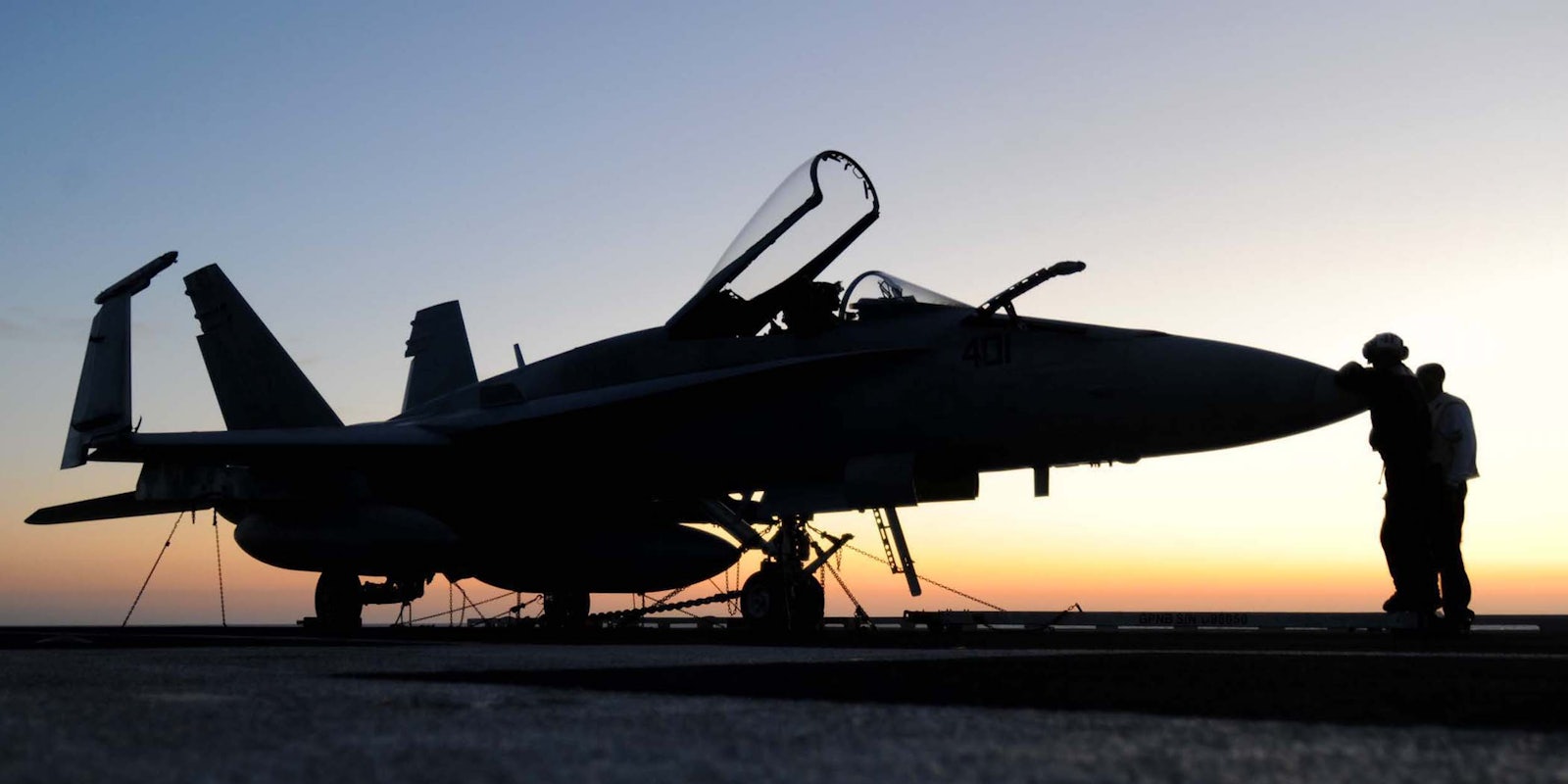President Donald Trump’s budget proposal will include a $54 billion increase in military spending—nearly 10 percent—which is expected to be offset by cuts affecting most other government agencies.
In a speech to the nation’s governors at the White House on Monday, Trump described the budget, which is weeks away from being introduced to Congress, as a “historical increase in defense spending to rebuild the depleted military of the United States.”
“We have to start winning wars again,” the president said. “When I was young, in high school and college, people used to say we never lost a war. We need to win or don’t fight it all. It’s a mess like you have never seen before.”
During and after the 2016 campaign, Trump repeatedly referred to the U.S. military as “depleted” and a “disaster” that he will “rebuild.”
According to a 2016 report, the U.S. military budget is approximately $597 billion—as much as the budgets of the next 14 top-spending countries combined. U.S. military spending in 2015 accounted for 54 percent of all federal discretionary spending.
The budget cuts used to fuel the wars Trump referenced are expected to impact social safety-net programs; however, White House officials say that Medicare and Social Security will not be affected. Unsurprisingly, the Environmental Protection Agency (EPA) has been consistently mentioned as one department likely to lose substantial funding.
“We are going to do more with less and make the government lean and accountable to the people,” Trump said. “We can do so much more with the money we spend.”
A senior budget official told the New York Times that U.S. foreign aid will almost certainly be slashed, even though nonmilitary aid to foreign countries makes up less than 1 percent of the federal budget and is often used to combat famine, disease, and poverty in poor and developing countries.
In 2015, for example, U.S. foreign aid procured 57 million antimalarial treatments, including 21 million preventative treatments for pregnant women. The U.S. government estimates that the effort, which cost roughly $4.3 billion and benefited 22 countries in sub-Saharan Africa and the Greater Mekong Subregion, saved more than 5 million lives, most of them young children.
Not all U.S. foreign aid benefits the poor, however. In September, the Obama administration announced a $38 billion security assistance deal with Israel, money allocated over the next decade by the U.S. State Department—not the Pentagon. Roughly a quarter of the cash may be spent by the Israelis on military equipment, including arms, with the stipulation that American defense contractors benefit from the sales.
U.S. foreign aid initiatives targeting hunger also typically require the recipients to spend aid dollars on food grown in the U.S., rather than using it to boost their own agricultural industries.


